Three years have passed yet Ash’s and my Kokoda adventure remains firmly in our memory bank. Below is a diary written by Ash and some photos taken by our guide Matt, Ash and I throughout our trip. If you have ever considered walking the Kokoda Trail then I’d highly recommend you have a read.
Day 1 12.08.14 @2130
I arrived in Port Moresby with Rach after flying from Brisbane, with a stopover in Cairns. Customs at Port Moresby were very lax and we entered with ease to find the Kotrek staff waiting. The staff consisted of Matt, co owner and trek leader; Mac, porter and group chef; Seone, porter; Bombai, driver; and Rod, co-owner and leader.

We travelled in a small, very well worn van along Ellen Beach (previously the army’s main airstrip) for an hour to ‘Fourteen Mile’ our accommodation for the evening. It was slow going due to the traffic and poor infrastructure. There has been rapid population growth in recent years due to mining but the government has done little to help accommodate people on the roads. Outside it looked quite poor economically with compounds, barbed wire fences, rundown businesses and poorly established businesses. Many people were playing sport, which was great to see. We learned that rugby league is well supported here and the locals can be fanatics when it comes to the Australian State of Origin. You’re a maroon or a Blue!
After arriving at Fourteen Mile, we rested at Matt’s aunty and uncle’s place. It was very basic but clean. Rach and I managed to wash our hair properly for the last time and we spent the evening finalising our packs in preparation for the start of the trek the following day.

Day 2 13.08.14 @ 1730
We started early, waking to the sound of Seone playing his guitar and singing. He has an amazing voice and has been teaching himself to play guitar from the age of ten.
After Grace, Matt’s aunty, cooked us breakfast, we left Fourteen Mile camp and drove in the van to Bomana War Cemetery – the largest cemetery of ANZAC soldiers in the world. It is a beautiful burial ground; each headstone has its own native plant alongside it. It was very eerie looking at each headstone and seeing how young each of the men were and how they only made it a few months into the war before they died.
June 1942.
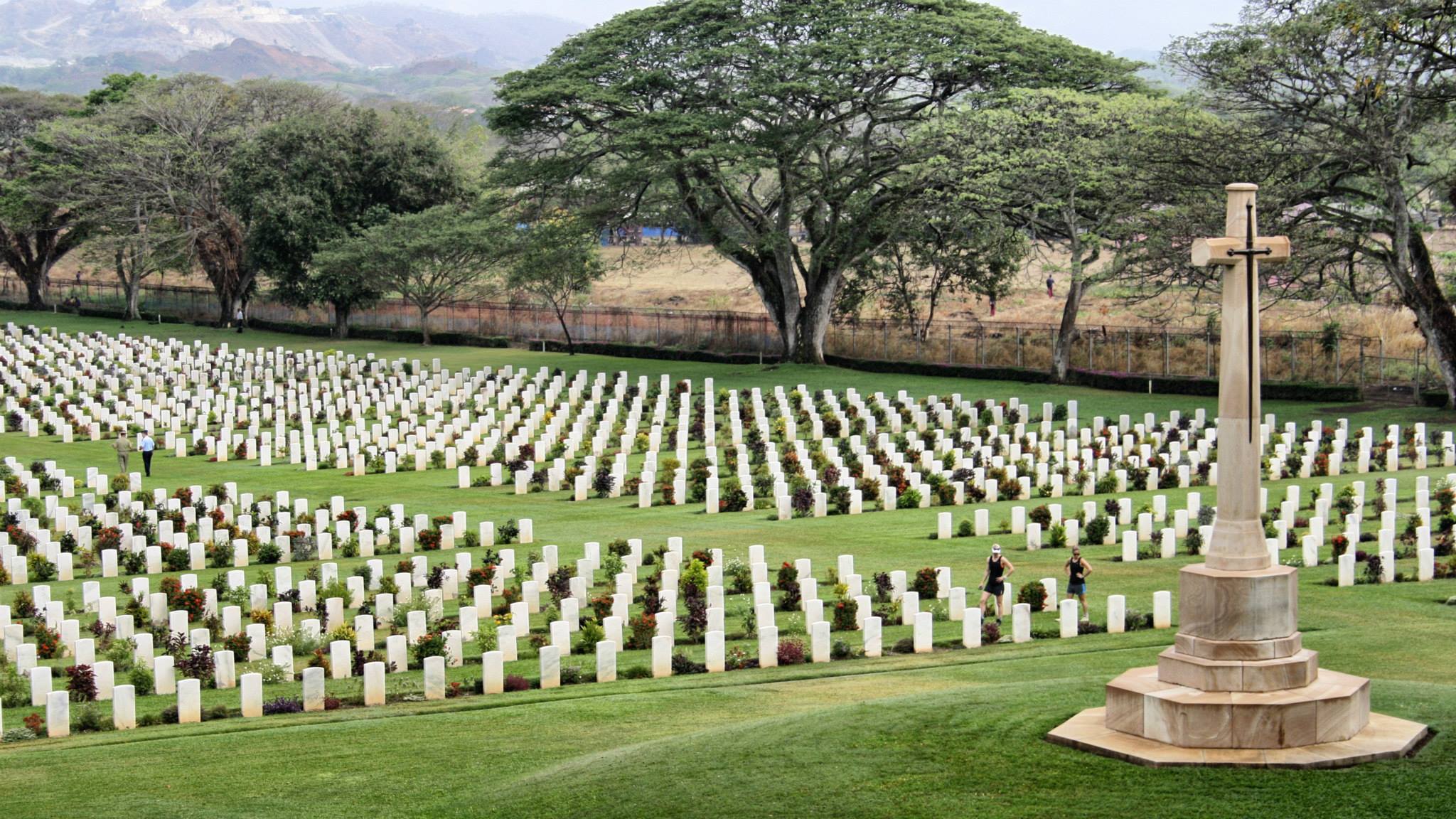
The number of unnamed graves also struck a cord with me. The monument overlooking the site was erected in honour of and dedicated to the men in these unnamed graves.
After visiting the cemetery, we were delayed because we needed more supplies and we were running on PNG time (no one is in a hurry here or cares if they are late).
We picked up Rod from down town. He had left Fourteen Mile camp at 4:00am to get back to Port Moresby on local transport – trucks consisting of wooden bench seats and no load limit. If you can get on, you can travel.
From town, we made our way to Owers Corner. The erected gates at Owers Corner marks the start of the trek. We learned that the four other larger tour groups had left 1.25 hours earlier, so we therefore made the decision to shorten the first day of the trek and set up camp at Goldie Creek.

From Owers Corner, it was a one-hour walk down hill. The trail is extremely slippery and quite dangerous, but we survived without incident. The weather was actually fairly mild, which was nice, and it allowed for an easy first day. We finished the day with a dip in the fresh Goldie River followed by some singing.
Day 3 14.08.14
Today marked our first full day trekking, roughly 20 kilometres in distance. We made our way across Goldie River after packing up the campsite in the dark. Breakfast was Weet-Bix with powdered milk and a warm cup of MILO. Unfortunately I lost one of my thongs on the river crossing, which was pretty inconvenient. The flow of the river was not that strong and only waist height but the havianas didn’t stand a chance.
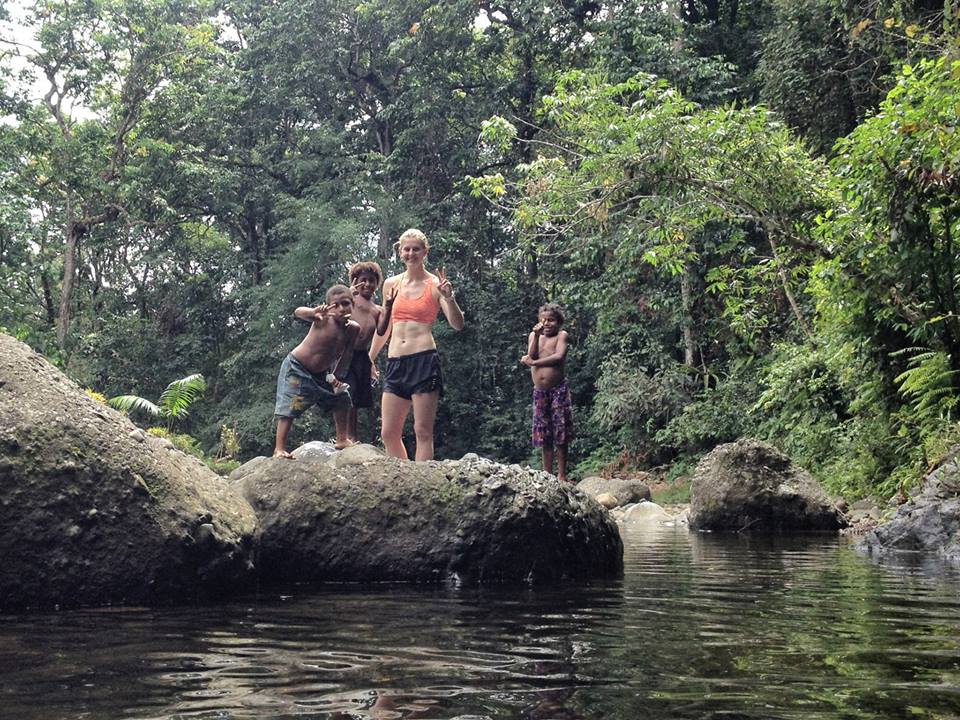
The terrain was very steep with several river crossings requiring rock hopping. I laid claim to the first AND second fall of the trek in true Nelson style. Matt followed closely with the third fall. We had a break at the local village for lunch. It was nice to wash in the river after being covered in mud. I also played a local form of hockey with the kids, which involved a stick and a puck made from a rubber thong.
We pushed on to the uphill part of the climb and, although difficult, it was a little easier than descending and trying not to fall. Seone led the way and was amazing at not slipping once despite having no trekking poles and carrying a pack twice the size of him.
After two hours, we arrived at our camp Ioribaiwa for the night. Ioribaiwa is the furthermost point reached by the Japanese before they were ordered to retreat because of lack of supply, even though they could see the lights of Port Moresby. Orders of their retreat had been given to the Japanese general, otherwise they may have persisted.
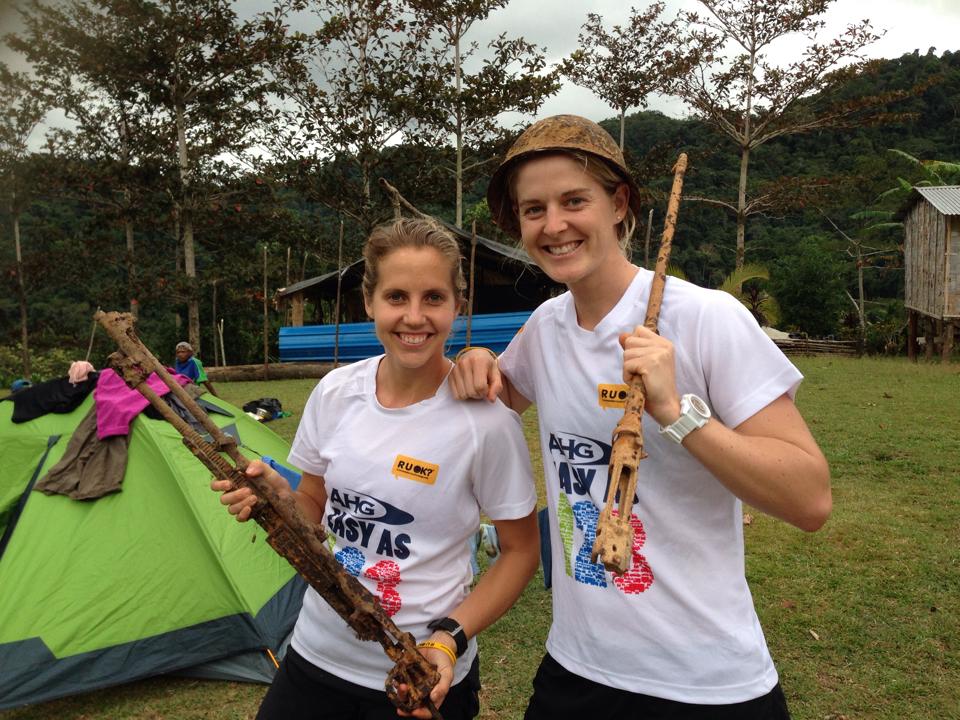
Ioribaiwa was packed with other camping/trekking groups, which was nice, because it meant we could walk at our own pace and still be social at night. We watched the sunset and it was a sensational sight, with vivid oranges setting behind the ranges.
Dinner was made by Mac, and it was great. We ate while Rod tried his hand at using Rach’s massage roller on his legs. It appeared that Rod wasn’t too much of a fan and found it very painful.
Tomorrow will be our hardest climbing day and we will be setting off at 6:00am. Everyone seems to be fit and well.
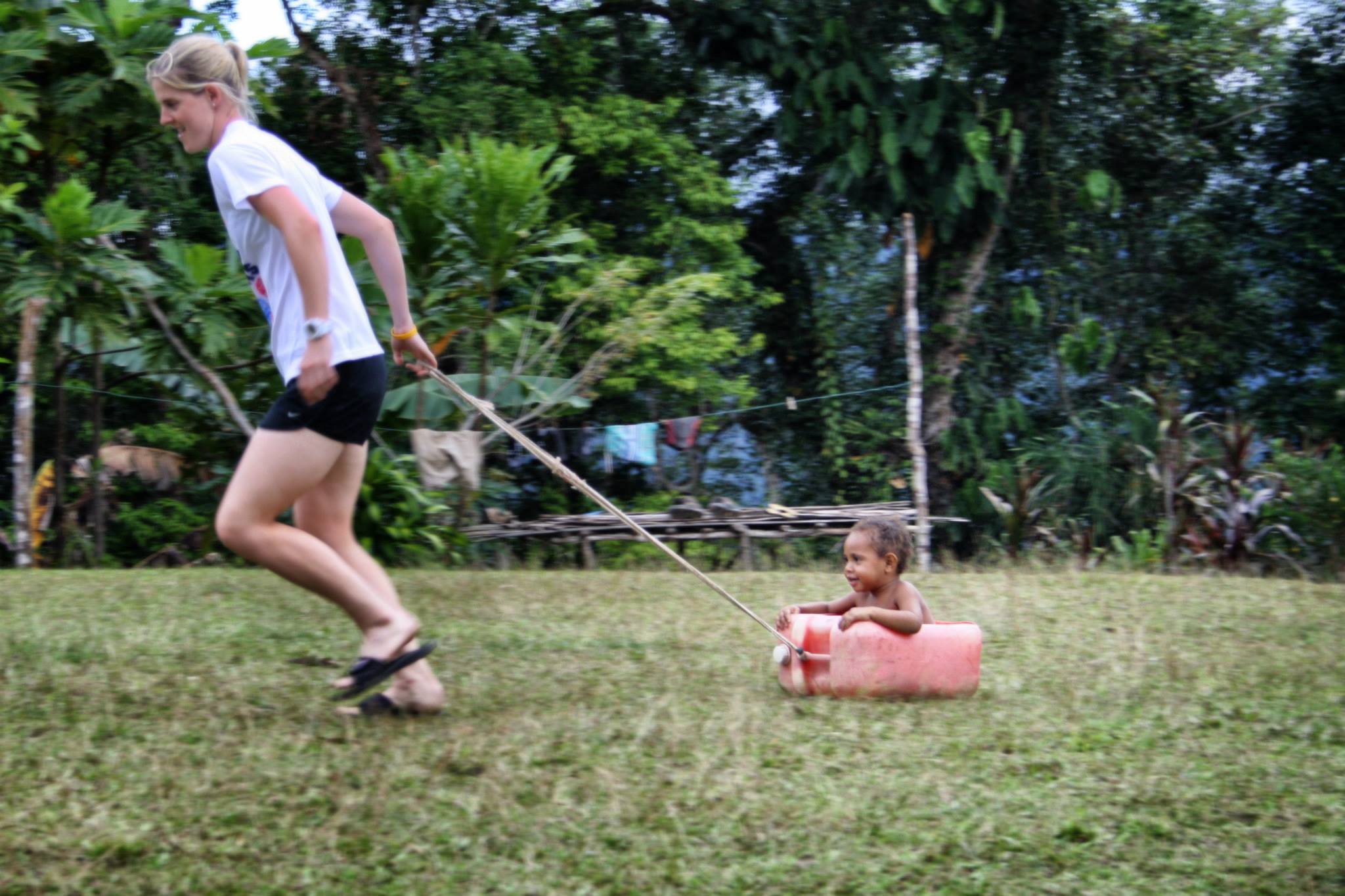
Day 4 15.08.14 @1430
Today we departed at 6.20am, leaving slightly later than most of the larger groups. We walked initially up hill, which was just a taste of what was to come, with Mount Maguli expected to be difficult. We set a steady pace and because the trail was dry we didn’t have too much of an issue winding our way up. We passed most of the groups, as many found the climb difficult. It was amazing to see a large number of older people attempting the track. Many needed assistance to get up the large steps.
We stopped for lunch three quarters of the way up the hill and felt pretty good. It had been fairly demanding physically but easier than expected. After some beans and crackers with a side of the local delicacy – canned pork – we set off again, determined to get to the top and onwards to camp before the heat set in.
The last leg to the top was called the Japanese ladder, which was quite a bit easier than the morning climb. Our reward at the top was some mobile reception, where we checked in on Facebook and sent a few messages. It was literally all down hill from there and we arrived at the camp in Nauro by 13:45, which was great. We were first in so we got a nice hut and shower (hose) before the rest of the groups started to arrive at 15:00.

Tomorrow is meant to be an easier five-hour walk through swampland towards Brigade Hill. Rach and I are still well and blister free, which makes this experience much more enjoyable.
Day 5 15.08.14 @2015
It was a short trek day today so we didn’t depart Naro until 7:00am, and we arrived at the village of Minari around midday. The main portion of the trek was easy because it was through swampland, and, because there had been little rain, it was actually dry. Usually it would be hard conditions to trek through. We reached a very steep section of the trail called ‘the wall’ by 9:00am and headed up. It was really hard, and, after a few days trekking, certainly gave the legs a workout. The initial part of ‘the wall’ was very steep and actually would have been more difficult coming down than going up.
We kept going until Minari, opting to have lunch at the site instead of stopping. It was a nice walk because all the guides and porters, including Mac and Rod, were with us. Previously Rod was a little way behind because of his heavy pack and knee problem, which he sustained during a local rugby game. Minari is a cool village and is much bigger than the other villages. It has a school, medical clinic and church. It also has a dirt rugby pitch, with housing is built around.
After arriving, we headed down to the creek/watering hole, which looks like a small oasis with mountains surrounding all sides of it. The water was pretty cold so I only managed waist depth.
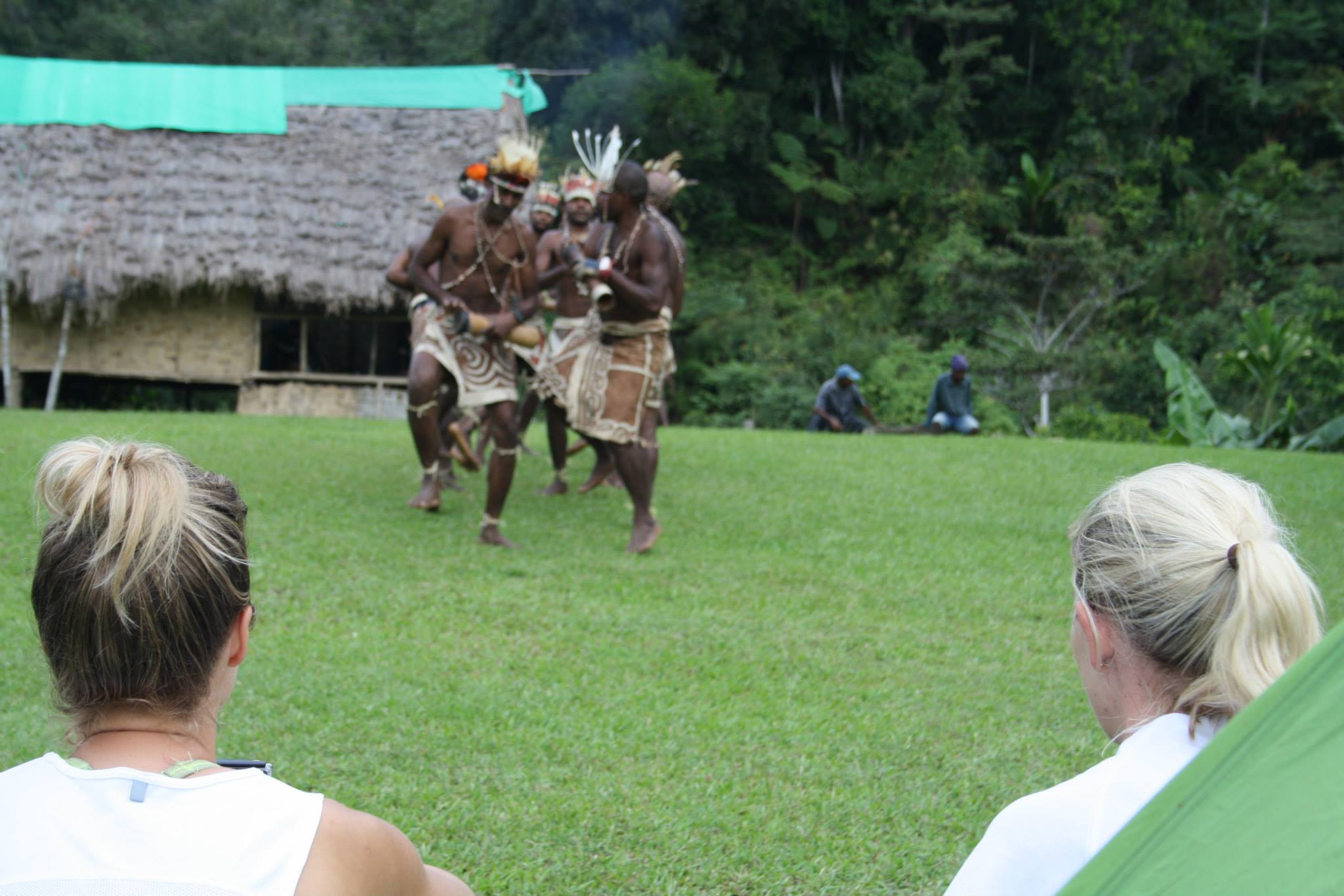
We were sharing our site with the Adelaide trek company Adventure Spirit, who have porters from a coastal town called Buna. They are all related and very musical. They put on a show with traditional outfits on. Their ability to sing and dance with such harmony is amazing. They also showed us their craft of carving wood, and they made each of their trekkers a wooden pole to take home. It included their name and company name to show their time at Kokoda.
After dinner, Rach, Matt and I chatted, and Joseph, who was from Italy and was travelling alone, came by the hut for his first taste of MILO and was enjoyable company. Seone was also excited because Rach found his beloved mobile phone, that he lost while at Naro. He had even blamed the local villagers for stealing it. We also had a look at the airstrip in Minari. It is narrow and the surface is made of short grass. I wouldn’t be too happy landing there, given the amount of mountains one would have to negotiate prior to landing.
Tomorrow is going to be a long and hard day. We will be taking on Brigade Hill.
Day 6 17.08.14 @1945
It was an early rise today, waking at 5:10am and departing Minari by 6.20am. We walked down to the Minari airstrip where the track headed towards Efogi village.
It had been an eventful night. An unknown person was tapping on Rach’s tent and was asking if they could come into her tent. Unfortunately we weren’t much help because we did not hear her plea to Matt for help. Thankfully they did leave, but scared Rach in the process.
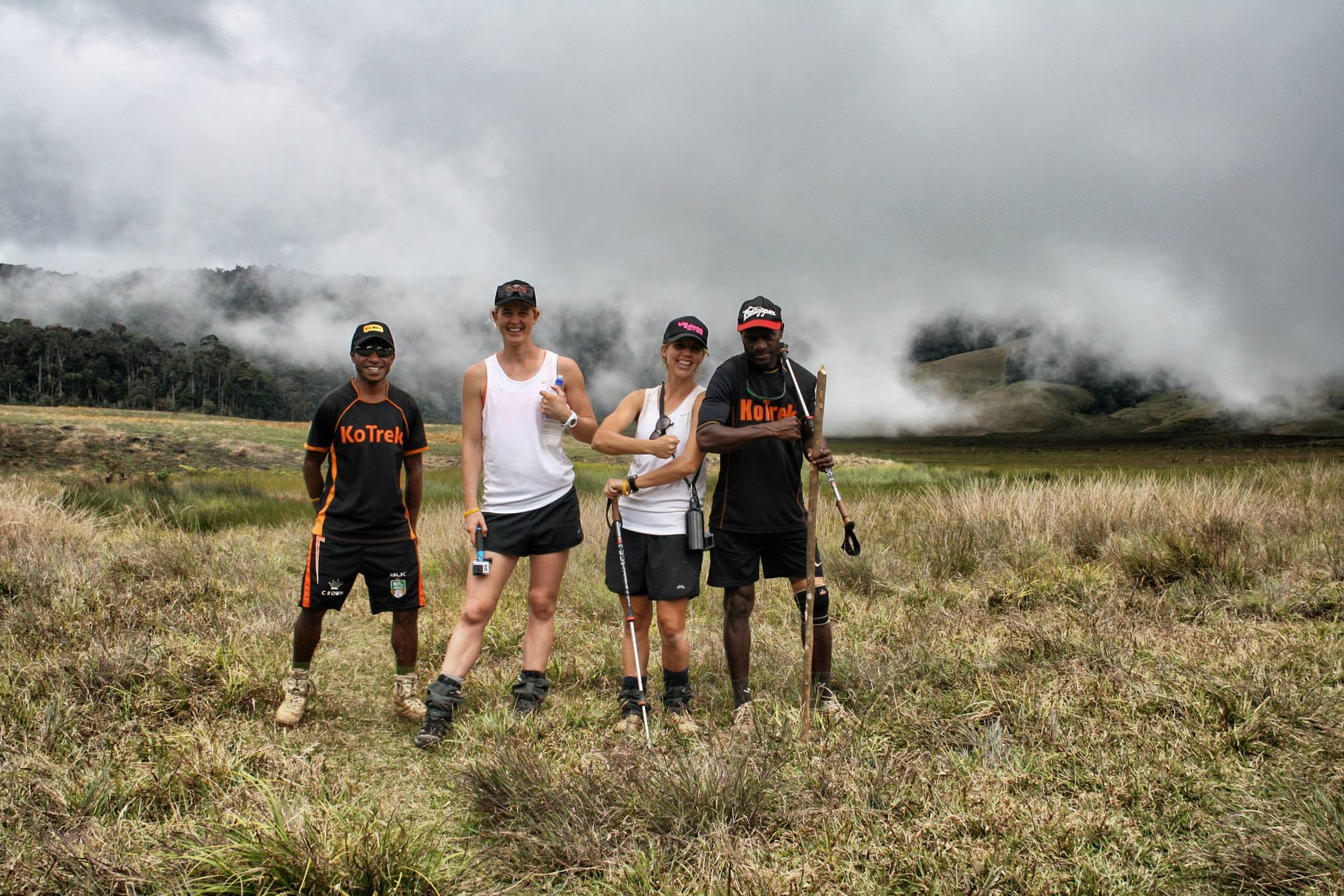
It was sad to be leaving Minari because it had the best toilet on the whole trail. The toilet was a Kokoda Authority Initiative called Crappers for Kokoda. The toilet was still a long drop but it had a real toilet seat and the view from it was worth a million dollars! It is small things like this that you appreciate when trekking.
The hike over Brigade Hill was quite long and tough, taking more than three hours. At the top, there was a small memorial plaque commemorating the site where the Japanese initially outflanked the Aussie troops, which led to quite a few deaths. Many were buried there but their bodies have since been moved to Bomana Cemetery.
Mac told the story of a Japanese soldier who wrote the book The Bone Collector. This soldier is famous for returning to Kokoda to retrieve and bury many of his Japanese comrades. Mac’s story explained that there was a hollow in a tree, where, in the war, the soldier sat until the Japanese arrived after he had been shot in the face but not killed. Even fighting the Australian soldier who shot him until the Australian died from stab wounds.
We then continued to Efogi for lunch and decided to head to Efogi 2 to stay the night. We met the famous Andrew and George (other Kotrek guides) who were escorting some American ultra marathon runners. Unfortunately, the runners had insisted on following a map out at Myola rather than listening to their guide, and, as a result, got lost for more than six hours and had to be rescued by another trekking party.
They didn’t look like marathon runners and certainly were behind their six-day schedule, resulting in them probably having to walk through the night to make their flight.
We spent the arvo in Efogi 2 and due to Sabbath it was quiet until 6:00pm. We were going to start a cricket game until we were advised by Rod that because it was Sabbath this wasn’t appropriate.
We opted to play a local game called ‘last card’ game instead and were treated to biscuits and a local avocado. The avocado was huge – almost the size of a melon. We also met a young village girl called Vivian who was in year 8. She spoke very good English and was happy to be attending high school because she wanted to be a teacher. It was nice to hear from a young girl who was passionate about learning and thinking about a career.
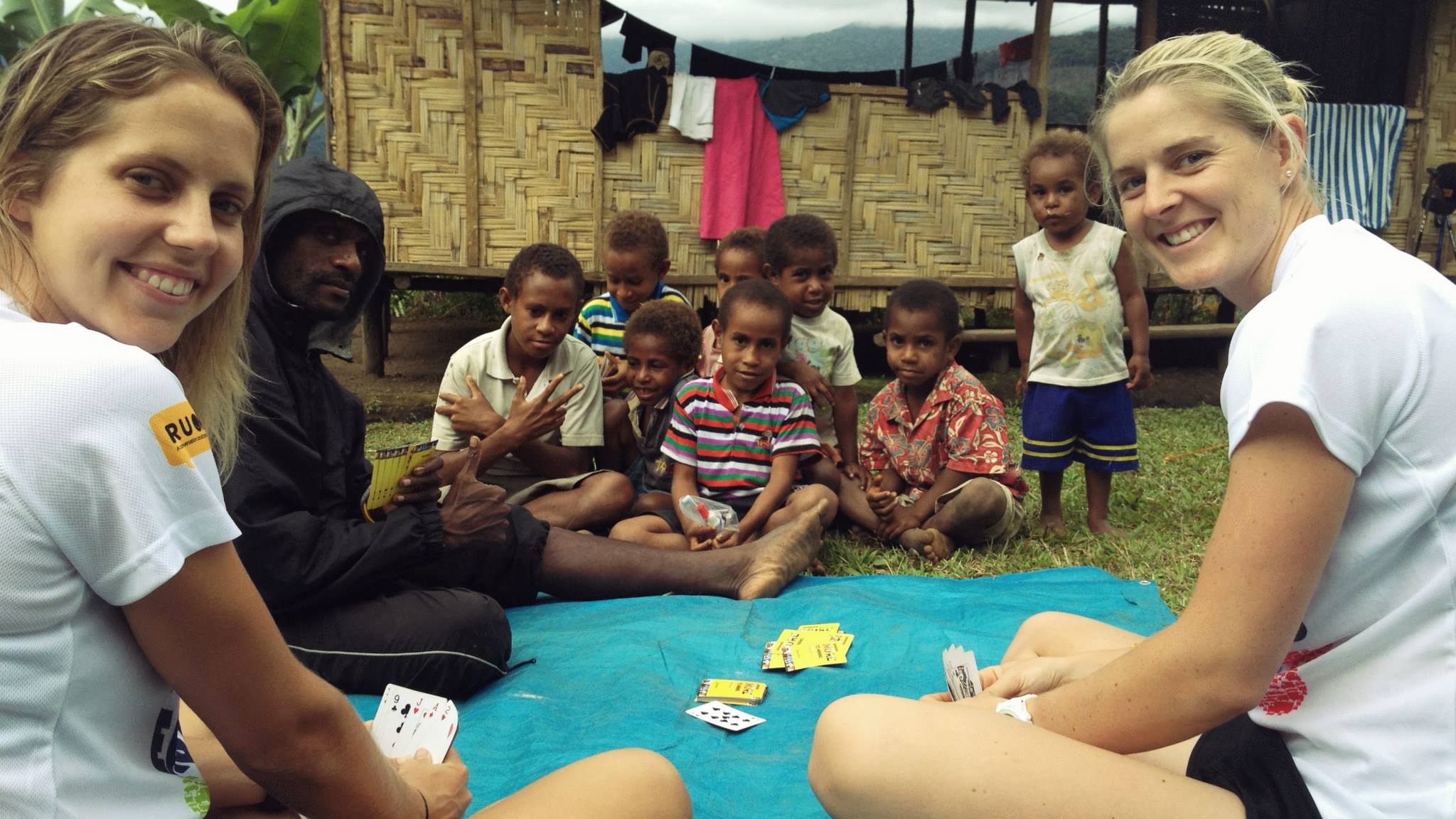
Tomorrow, we head to 1900 or Templeton’s Crossing. It goes over Mount Bellamy – the highest point on our trek.
Day 7 18.08.14 @1700
I’m currently sitting and writing this while overlooking the river at Templeton’s Crossing
It has been an epic trekking day, to say the least. We started at 6.20am from Efogi 2 and made our way over to Mount Ballamy. This was the highest point of our trek, reaching 2184 metres. Although it was steep, it was also very long and required a lot of patience to keep persisting.
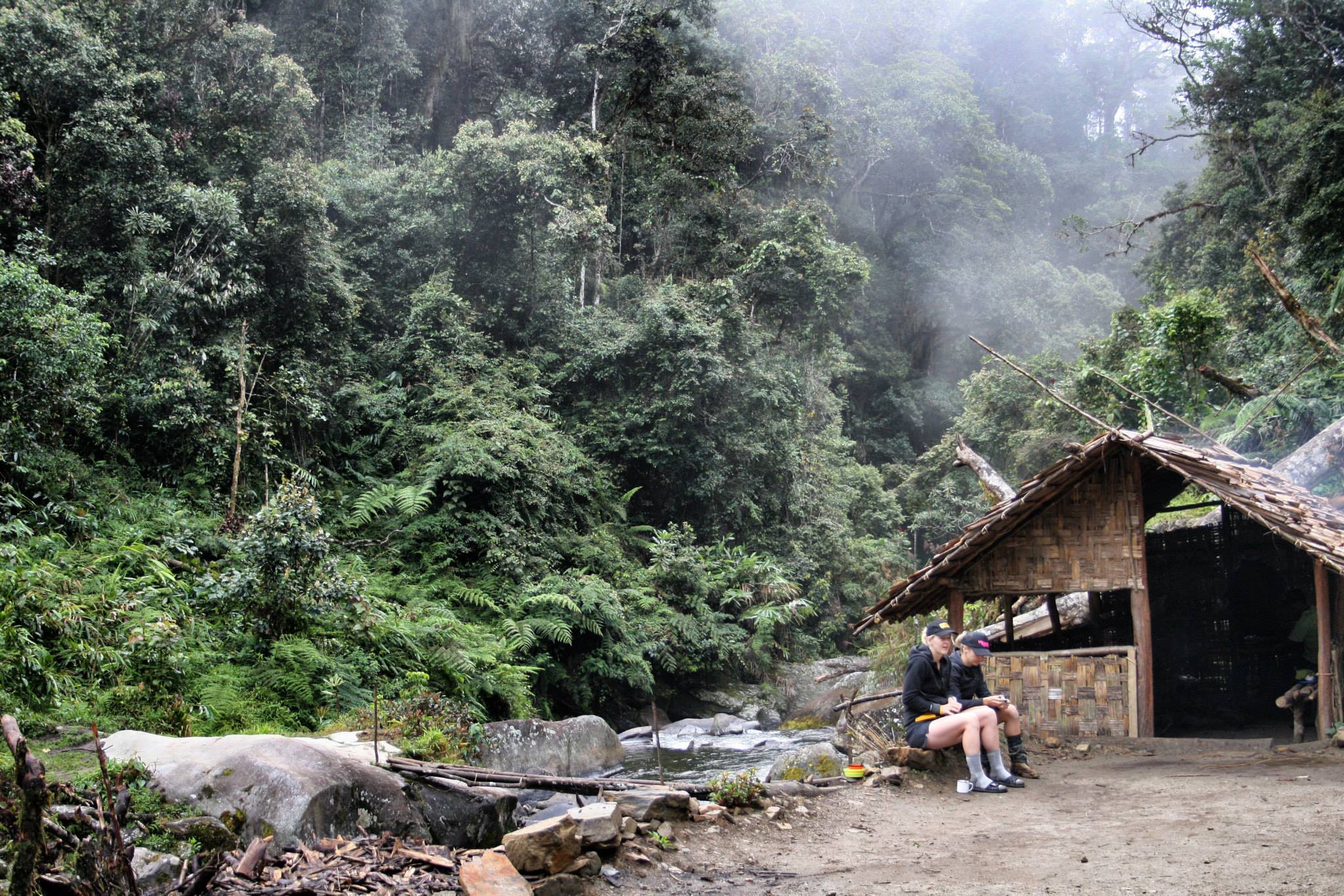
We stopped at Diggers Campsite for lunch. I felt unwell. After a small episode of nausea, Nurse Rachael gave me some Maxolon. Thankfully, after that I felt great. Our one rule was not to get sick!! We dropped our packs and headed to Myola 1, which was where the American marathon runners got lost the day before. Myola 1 is a large swamp area where rations were dropped during the war, despite many of the drops being unsuccessful. While there, we even spotted a wild boar.
Once back near Diggers camp site we headed onwards for another three hours. After what seemed like forever, we finally made it to Templeton’s Crossing. It is a small campsite set on the water and the cabin is built over the river. Hopefully the floor holds out because we are all sleeping in there tonight.
Despite the day being very hard and long, we finished up at the trails prettiest campsite. The campsites at Diggers looked like something out of Jurassic Park, and other parts of the trails resembled a scene from Lord of The Rings.
It has been a rewarding day, and one of our fellow trekkers Julie, in true adventure spirit, told us about her husband who committed suicide 20 years ago. She said thank you for walking and raising awareness for RUOK?. It was really special having someone share that with us.
It’s dinner now and no doubt it’s going to be an early night. We are stuffed!
Day 8 19.08.14 @1710
After the long trekking episode yesterday, today was much shorter and enjoyable. We had a sleep in, and didn’t depart our cabin in Templeton’s Crossing until 8:00am. We trekked down some slippery hillsides, which apparently is known for being the home of many leeches. Fortunately for us, we did not come across any.
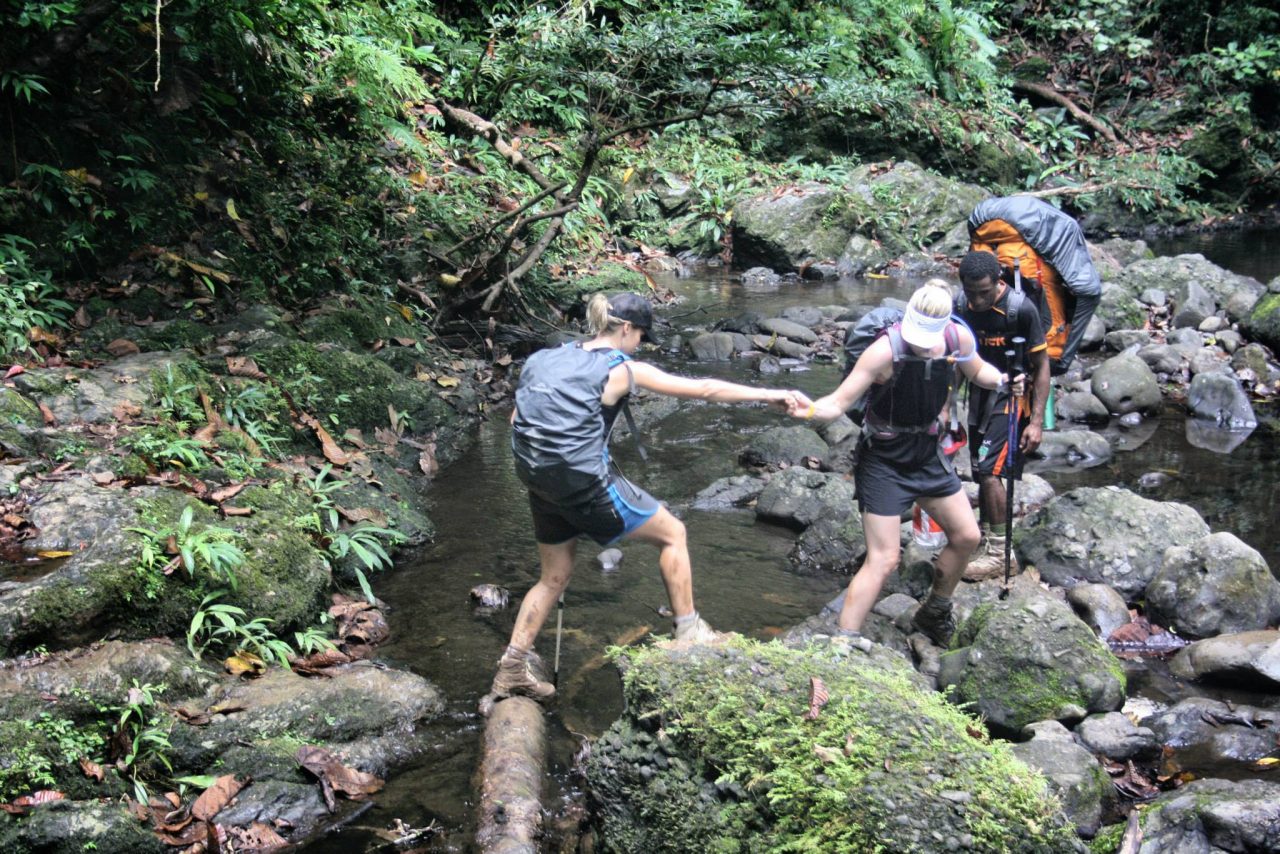
We steadily made our way to Eora Creek, arriving 11.30am. Eora Creek was by far the nicest setting of all the campsites on the trek. It sits on a fast flowing river filled with boulders and there are many swimming holes. There are two bridges linking the two sides of the river and the two campsites together. The bridges are amazing; they are made and held together with wood and bamboo. The bridges’ arches are made from naturally curved wood.

After arriving at Eora Creek, we embarked on a quick expedition with our Italian friend, Joseph (a solo trekker), up the opposite side of the river to look at some of the Japanese ammunition pits. There were many leftover helmets, armed grenades and mortars. You could also identify the round holes that had been dug out by the Japanese forces for their men to sit in and fire weapons from.
Eora Creek is the site where Australia and the Japan were fighting each other from different sides of the river. Because the Japanese could transport heavy artillery (weighing more than 200kg and moved manually along the track), they had more firepower, and were able to push the Australians back.
Tomorrow we trek to Isurava, which hopefully won’t be too much of a long trek.
Day 9 20.08.14 @1625
We have finally seen some rain. After days of trekking, it looked like we were going to be blessed with a dry run. This afternoon, however, the clouds have opened, and, since midday, the rain has been steady. Fortunately for us, we arrived at Isurava prior to the rain, so we have managed to stay dry.
We set off from Eora Creek at 7:00am. The walk wasn’t too heavy climbing. It was our last major hill for the trek, just before the Isurava War Memorial. I had some pain in my Achilles tendon so I was happy to finish the walk when we did.
The war memorial was quite spectacular; it looks over the Kokoda Valley. There was a monument with four granite boulders. The boulders had been polished and shaped in Melbourne, and were then shipped to Port Moresby and flown to the site in a helicopter for placement. Each had been inscribed with the words Courage, Endurance, Mateship and Sacrifice.
A plaque of the Victoria Cross had also been placed at the memorial. The plaque was given to a 24-year-old, who died when he ran into the line of fire to allow his fellow soldiers to retreat. It was a memorable and humbling experience, and made me realise how difficult the terrain would have been to contend with in a war. The Japanese had to ascend every steep hill to attack the Australians on higher ground.
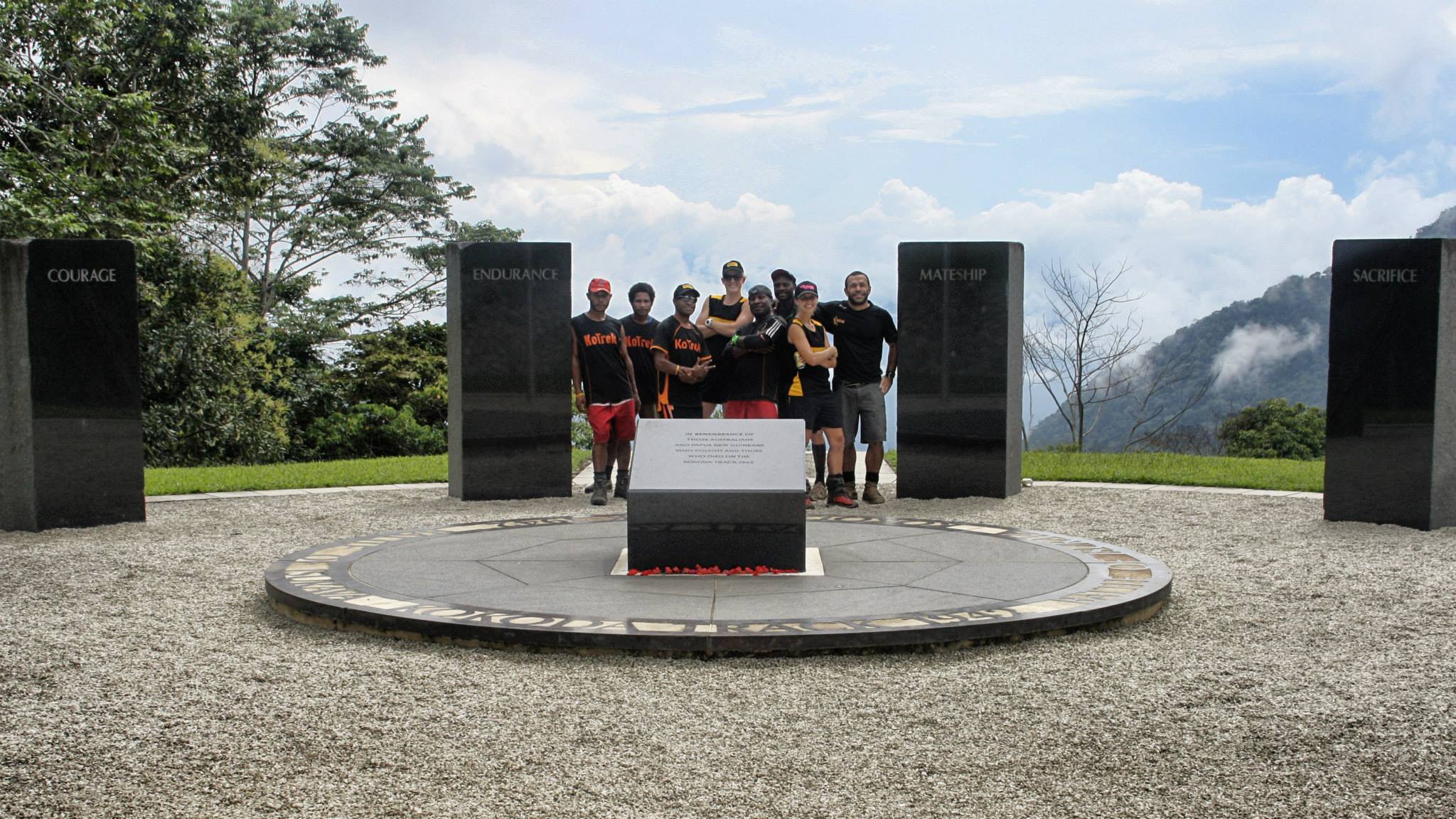
After staying at the memorial for an hour, we walked for another 40 minutes to Isurava Village, which was our last official night on the Kokoda Trail. Because it was wet, we played cards, namely ‘last card’, and taught the boys the new game of ‘tongues’. This involves poking your tongue out once you have the required cards and Seoni didn’t have much luck with this.
Currently, we are carving sticks with our names on it to give to Matt as a thank you present. We asked one of the porters from Free Spirit Adventure to do the bulk of the work. It will be a nice gift. Matt had been complaining that the boys had never carved one for him. The carving sticks are a traditional gift that the porter gives to the trekker at the end of the trek.
Tomorrow we head to Carvelo, Rod’s hometown, to dine and stay with him. It is just out of Kokoda so we will drop our packs at his home and then head into Kokoda for the remainder of the day.
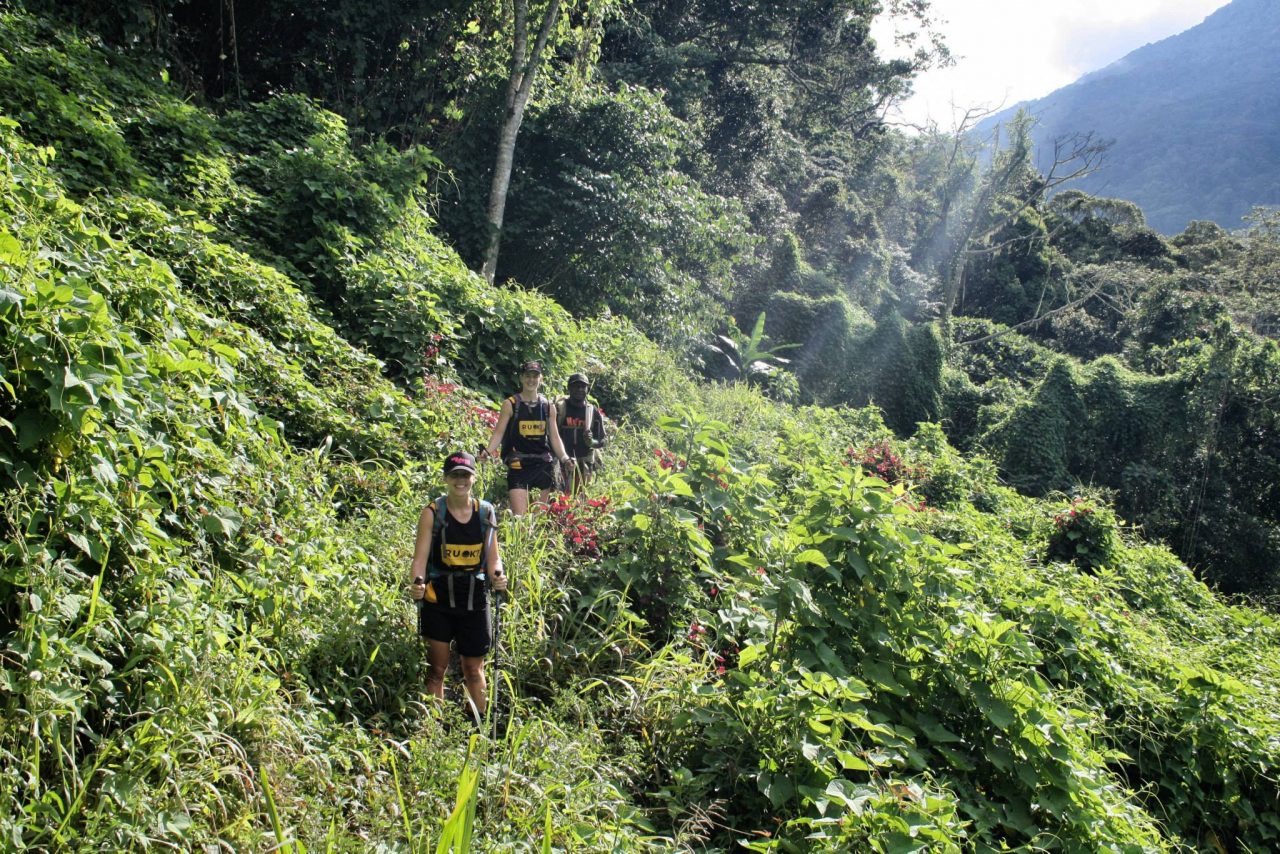
Day 10 21.08.14
We left Isuarva Village and set out for Rod’s hometown, Cavelo, which is the site of our last night of the trek. It was a fairly easy walk with the majority of it being downhill.
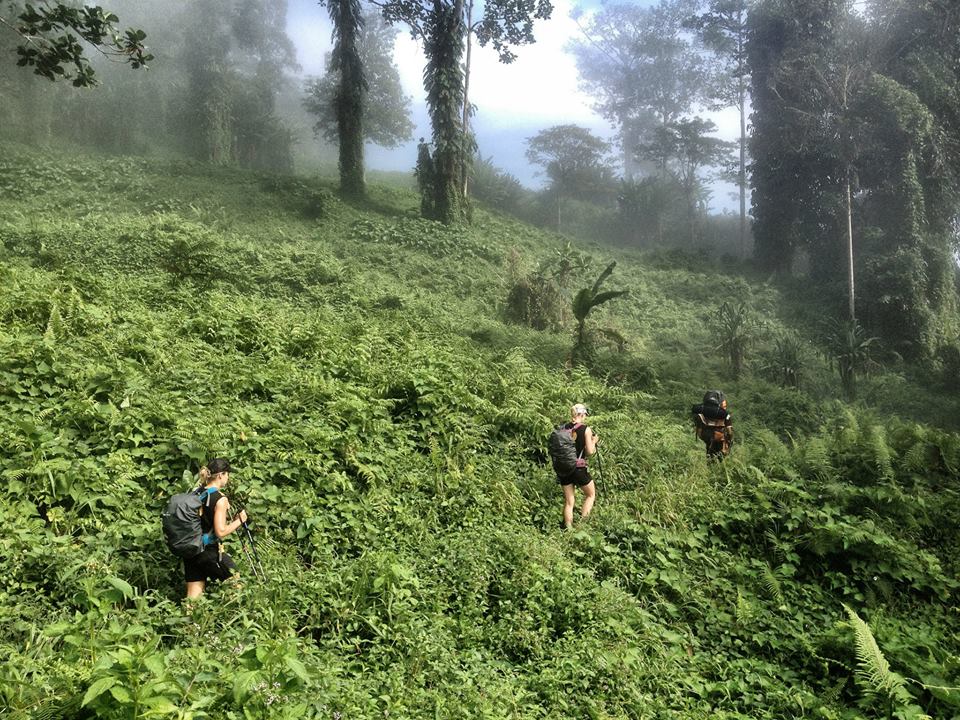
We briefly stopped along the way at a site that looked over the Kokoda Valley. When we first arrived at the site, it was completely fogged over, but within a matter of minutes we had a perfect view. It is easy to see how easily people can get caught in the weather while climbing – things just change so quickly. It was also apparent why Kokoda has a long history with failed plane landings and planes crashing into the mountainside; vision can be limited in an instant.
We reached Cavelo by lunchtime and were greeted by Rod’s wife, Esther, and their six children. They lived in a small wood ‘cabin’, which appeared to be predominantly one giant room. We didn’t see inside and nor did we ask. Matt informed us that people can be embarrassed about their living situation. Rod and the three children took us to the river, a five-minute walk away, to wash. It was fast flowing and incredibly refreshing. Bathing daily in a river certainly made us appreciate the luxury of having access to a shower.
Prior to the ‘bath’ we had a four-kilometre walk into Kokoda to mark the end of the trail. It was a great moment. I felt really proud of what Rach and I had achieved for such an important cause.
We took a walk through Kokoda. It has a hospital, electricity, some shops, a museum and, of course, a local school. Many of the children from surrounding areas walk to and from town every day. Rod’s children, for example, did an eight-kilometre round trip walk to school every day.

Rach, as only a typical goalie would do, suggested we run the last couple of kilometres back to Cavelo from Kokoda. After some initial resistance, Matt and I agreed. Thankfully, we didn’t have our packs. Despite having just trekked for nine days, I didn’t feel too tired. I actually enjoyed the chance to stretch my legs.
Dinner was made by Esther and was a traditional mixture of rice, root vegetable, savoury bananas and chicken. It was enjoyable, but as Matt explained, traditional meals in Papua New Guinea aren’t fine cuisine; they’re made with what is available and are cooked over fire or in a Moomoo (traditional oven). It was amazing to see what she produced, given how many of us there were and the number of people she had to feed in her family.
After dinner we gave our guides some gifts – some unused socks, caps and Matt his carved stick – to say thanks for their efforts. All were gracious and proudly wore every article of clothing, which was nice to see. Mac loved that I gave him my Big Dogg hat, given he calls himself the big dogg even having a ‘dogg’ tattoo across his back. I think Matt also loved his carving stick, despite our dismal carving efforts. It was an enjoyable day and it felt fantastic to accomplish something that six months ago Rach and I probably didn’t think was going to be possible.
Along with raising funds for RUOK, seeing how different communities live and understanding their values, cultures and traditions was invaluable to our personal growth.
WHAT WE LEARNED
1. No need for technology. Although it makes it easier to communicate, the system of communication along the trail was incredible. Everyone knows each other and their families. For example, if you send a message down the trail with another local heading that way, you can be assured it will get there, and a day or two later a reply will come your way.
2. Minimising = better contact with every one. No TV, no Internet or any other distractions seemed to result in many of the children playing basic games outside until all hours of the night. They also played a big role in the family chores, predominantly in the kitchen and the garden, or with the childcare of their siblings. Adults also stayed up until the late hours, chatting or singing by the fire, which was so lovely to see. There was such a sense of kinship with neighbours and family.
3. Japanese/ANZAC forces completed amazing feats in war. Seeing the track and its steep ascents and descents, it was hard to comprehend how they carried such heavy artillery through the terrain in those conditions. Both sides lost lives, and it was tragic to think how many people lost a brother, son, husband or father, who were still such a young age when they died.
Overall it was an experience that we will never forget. Since returning we have had some fantastic feedback from people who heard about our adventure, saw our photos or followed our progress through Kotrek or RUOK. We are so pleased we could raise awareness from a cause we are both passionate about whilst completing a once in a life time challenge! Thanks so much to the many supporters who helped us along the way and to all those who donated.
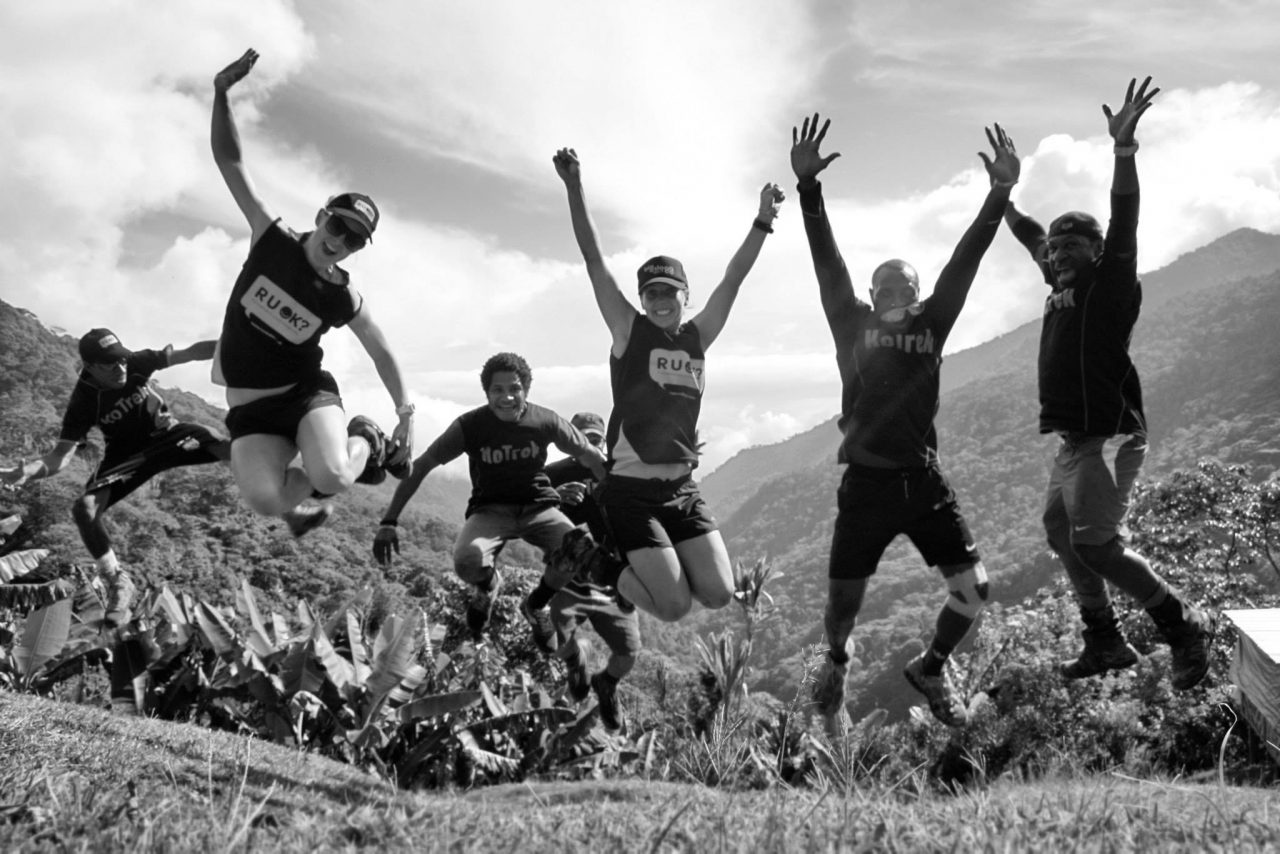
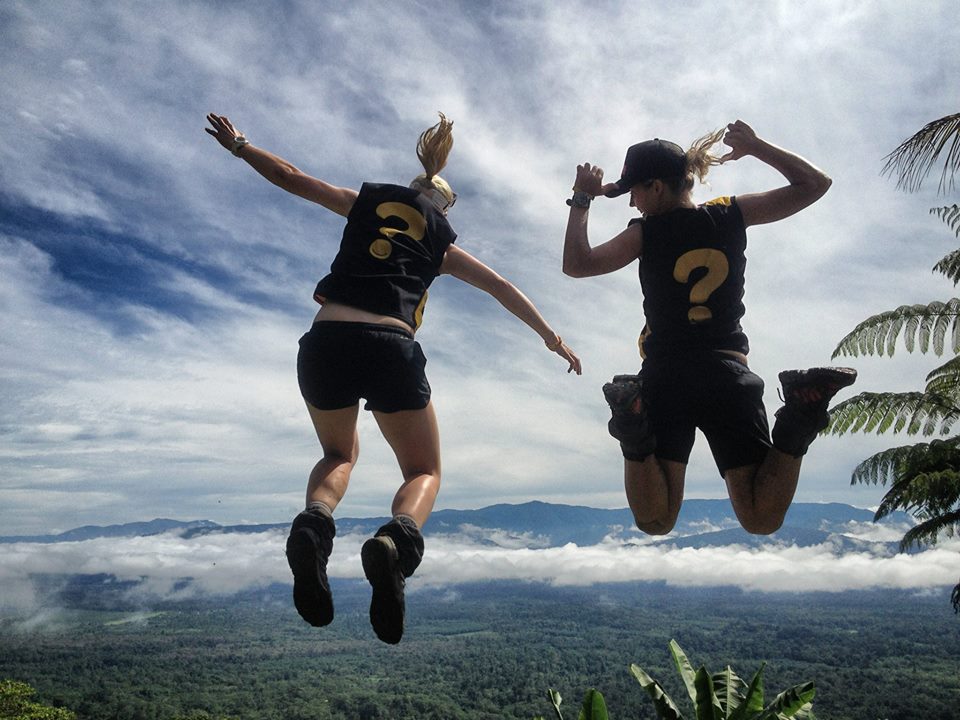
Very inspiring, fantastic to see you gals out there doing it. Might make the trek myself one day. Well done you are true inspirations
that was a beautiful adventure in PNG